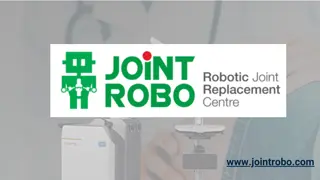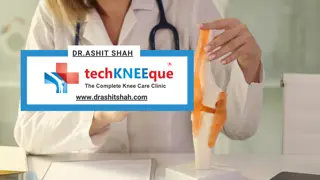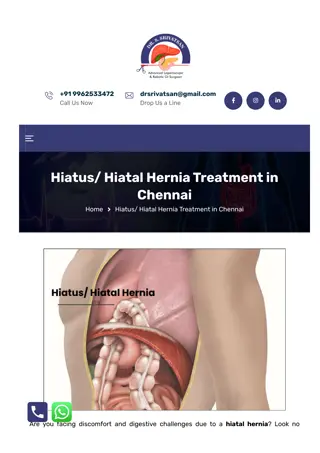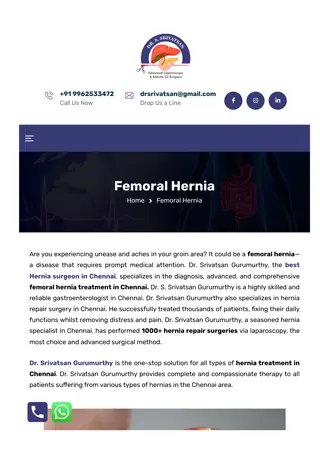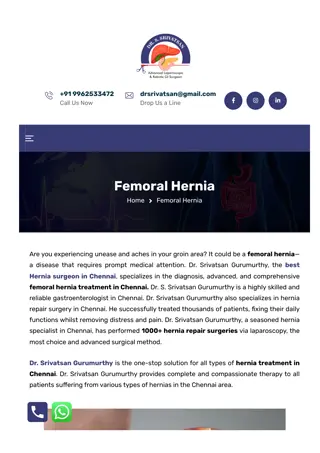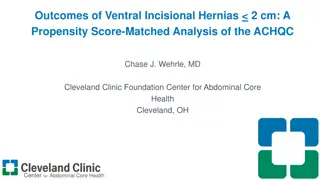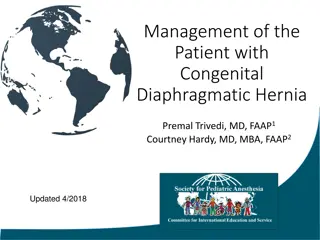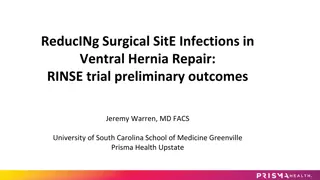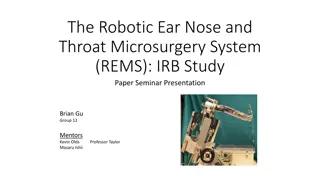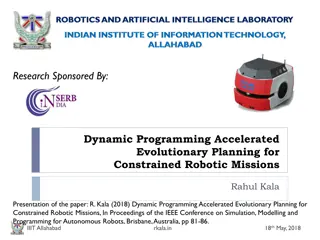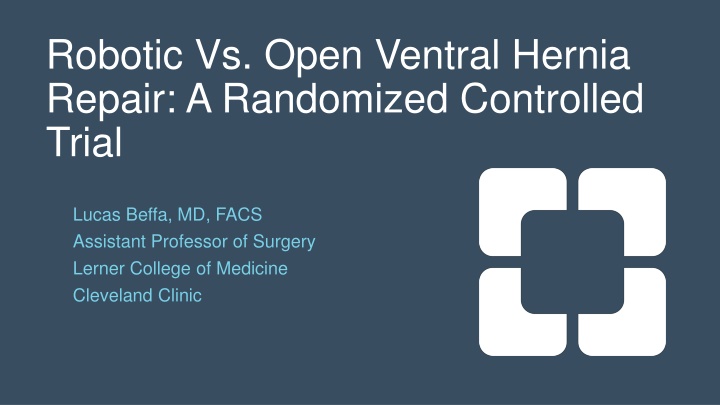
Robotic vs. Open Ventral Hernia Repair Study
This study by Dr. Lucas Beffa compares the outcomes of robotic and open ventral hernia repair, highlighting theoretical benefits, current evidence, and the ORREO Trial results. The study explores length of stay, complications, and other factors to determine the effectiveness of each method.
Download Presentation

Please find below an Image/Link to download the presentation.
The content on the website is provided AS IS for your information and personal use only. It may not be sold, licensed, or shared on other websites without obtaining consent from the author. If you encounter any issues during the download, it is possible that the publisher has removed the file from their server.
You are allowed to download the files provided on this website for personal or commercial use, subject to the condition that they are used lawfully. All files are the property of their respective owners.
The content on the website is provided AS IS for your information and personal use only. It may not be sold, licensed, or shared on other websites without obtaining consent from the author.
E N D
Presentation Transcript
Robotic Vs. Open Ventral Hernia Repair: A Randomized Controlled Trial Lucas Beffa, MD, FACS Assistant Professor of Surgery Lerner College of Medicine Cleveland Clinic
Disclosures Intuitive Surgical
Background Robotic posterior component separations (TAR) as an option for complex abdominal wall reconstruction have become increasingly popular
Background Despite its growth, there are few trials supporting any benefit - Almost all studies currently are retrospective and highly biased
Theoretical Benefits vs. Liabilities Theoretical benefits - Shorter length of stay - Less acute pain - Lower post operative morbidity Theoretical liabilities - Longer OR times - Higher direct cost - Cosmesis? Value = Outcomes/Cost
Current Evidence No difference in readmissions, SSI, intra- operative complications, or other post operative complications 111 rRVHR vs 222 oRVHR Shorter LOS in Robotic group - Median 2 days vs 3 days Higher SSO in Robotic group - But fewer drains used in rRVHR
ORREO Trial Open vs. Robotic REtrOmuscular Ventral Hernia Repair - 7-15 cm hernias with at least one comorbidity - Primary End point: Composite outcome of complications (SSO, SSI, SSOPI, readmission, reoperation) - 50 patients in each arm - No difference in primary outcome - Shorter LOS in robotic arm (2 vs 1 days)
Design Robotic vs. Open - Retromuscular - Permanent synthetic mesh - Midline defects (between semilunar lines) - Size 7 15 cm in width (primary or incisional) - BMI less than or equal to 45 - Must be a candidate for both open or robotic surgery
Primary Outcome Length of stay - Reported in hours - Defined as surgery start time to when discharge order is placed Hypothesis: Robotic will have a 24 hour shorter LOS compared to open
Secondary Outcomes Pragmatic Hernia Recurrence Hernia Specific Quality of Life (HerQLes) - 30 day, one year EuraHS - 30 day, one year Pain scores NRS 11 - POD 1 -5, 30 day, one year PROMIS 3A SF SSO/SSOPI/SSI Direct Costs Opioid consumption Readmission Conversion from Robotic to Open - Analyzed both ITT and PP
Power Calculation Alpha 0.05, Power of 0.9 24 hour difference in LOS 86 in each arm, assuming 10% attrition rate 200 total patients 100 patients in each arm
Patient Blinding Randomized in clinic Consented for both Same bandages post-op Parallel Groups - ERAS Keep binder on for first two days Patients guess which one they had
Surgeon Blinding Operating surgeon un-blinded Discharge surgeon blinded - Only determines when patient can discharge Operating surgeon manages patient post op and monitors for complications, etc.
Surgeon Quality Assurance Surgeons need to have at least 50 robotic retromuscular hernia repairs Submit two unedited robotic TAR videos for review
Current Enrollment Started Sept 2022 - 3 enrolling surgeons (fourth coming soon) 26 Consented 15 Operated
Future Directions Currently recruiting other sites If interested, speak to me or email me BeffaL@ccf.org

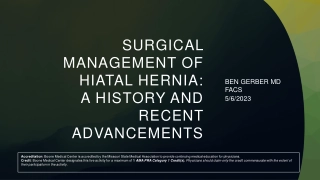
![❤[READ]❤ Robotic Exploration of the Solar System: Part I: The Golden Age 1957-19](/thumb/21623/read-robotic-exploration-of-the-solar-system-part-i-the-golden-age-1957-19.jpg)


